Stroom Invest interviews / artist Jeannette Slütter
I’m looking at a shape covered in a fabric sleeve. ‘It doesn’t stop starting’, the sleeve narrates. It appears to be a cycle and is part of Jeannette Slütter’s (1988) solo exhibition in Moira, Utrecht, mentioning the temporality and changeability of life. I’ve never seen the work in real life and look further at Slütter’s website, followed by her Tumblr account and Instagram profile. It soon becomes clear that Slütter’s practice centralizes our reality as a stage for choreographies: the works are a combination of both site-specific situations and performances in which the spectator takes on an active role, and I really should have seen the work. The existing stage that remains now, is the anonymity from which we will talk. Thirteen questions by e-mail give rise to a further Skype conversation in which we will focus on the frictions ‘authorship’, ‘dialogue’ and the ‘artistry’ – concepts that aren’t just inherent in our meeting, but in Slütter’s practice as well.
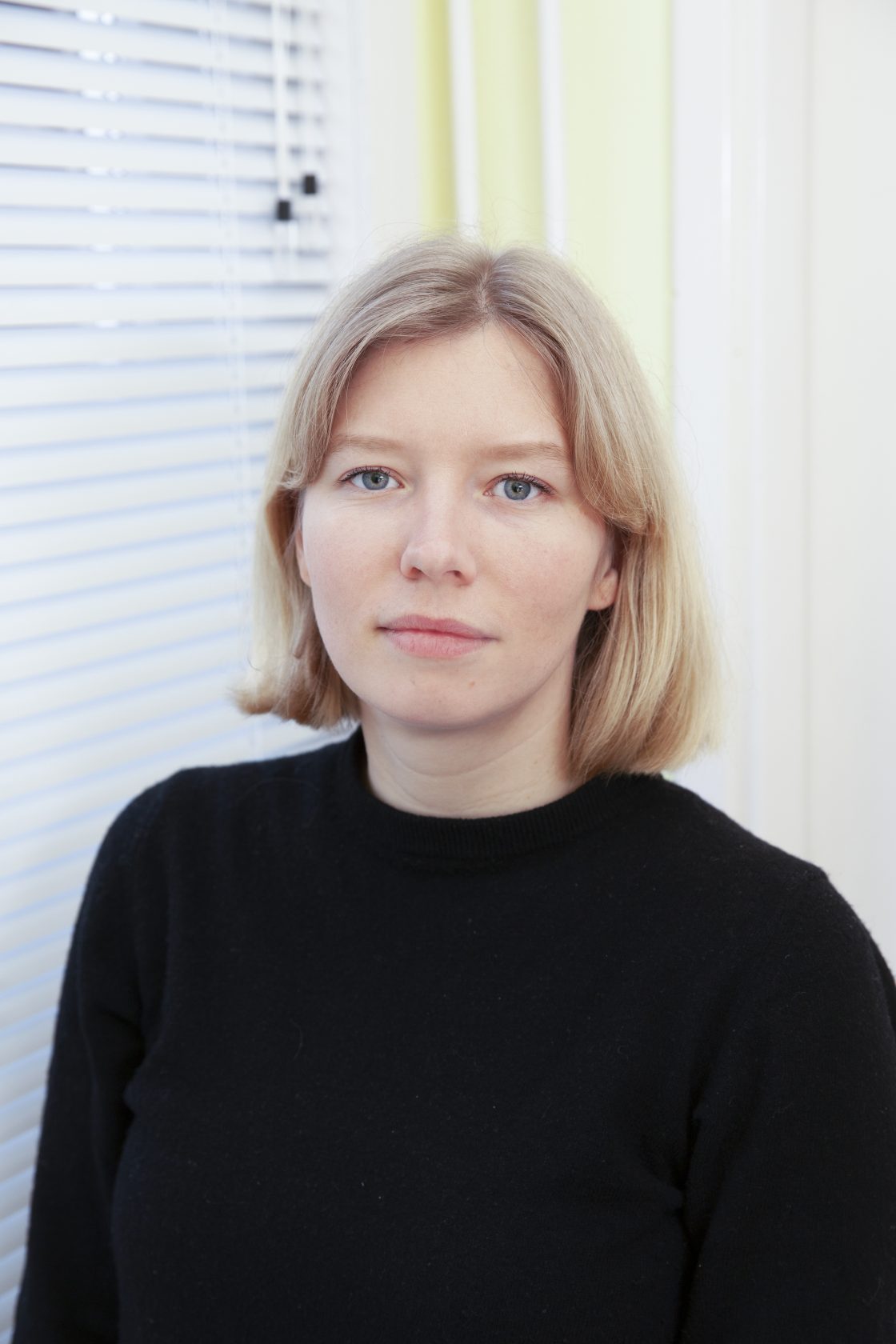
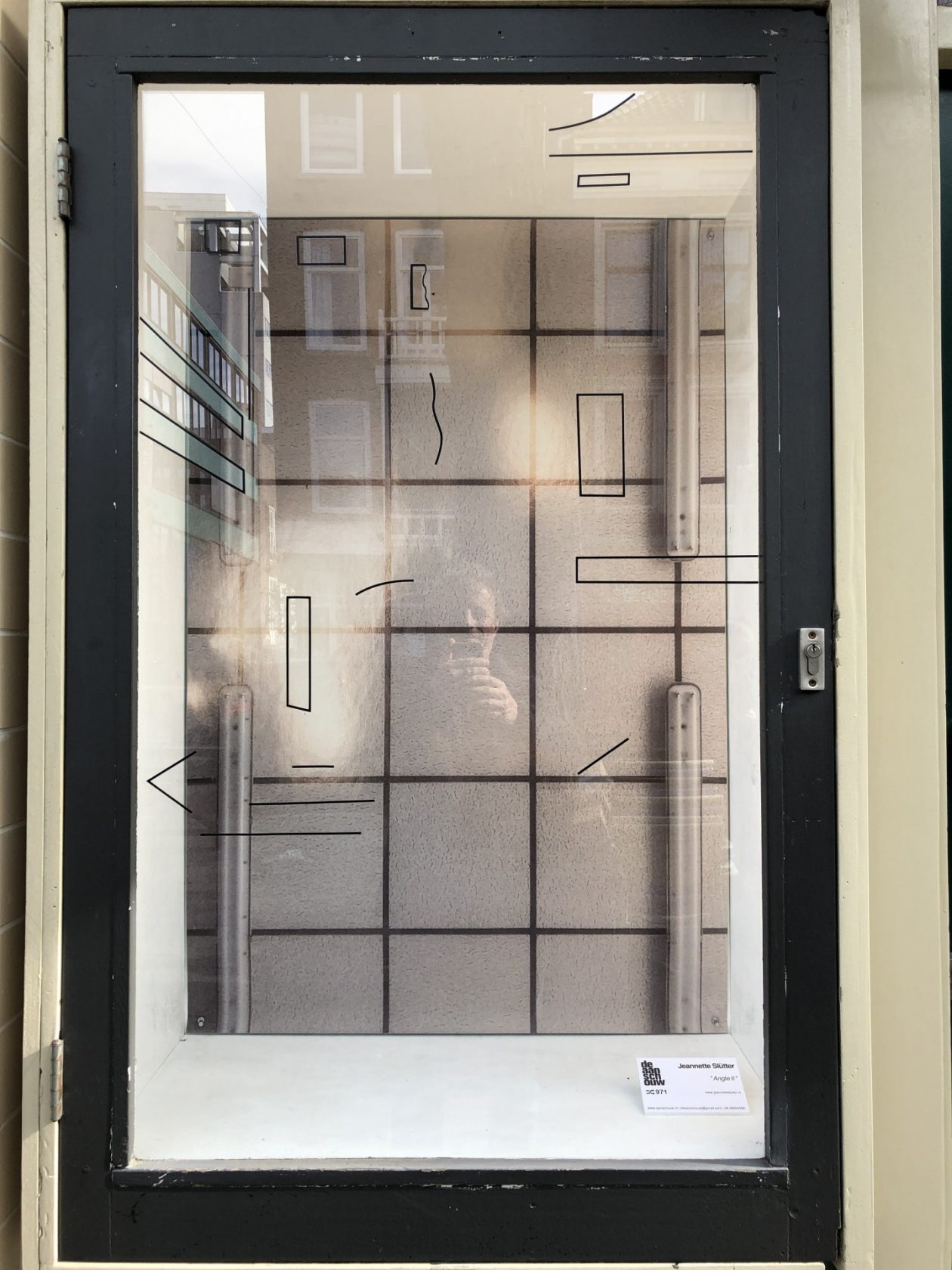
The dialogue between asking a question and answering the same question shows a two-way tension. After all, a question can be interpreted differently than stated, an answer similarly. On the 28th of July, Slütter and I talk via Skype. Our conversation doesn’t take place as an overall interview, but is based on mutual interest. “I think it’s quite important that this interview takes place via Skype. To me, an interview is a collaboration. You have interests, that’s why you ask questions, and so we both have interests. It is interesting to restrain your ego, knowing it isn’t just about ‘you’”, Slütter tells. “This is interwoven in my work: the question of who is in control and whether this is important, and also whether I am the person who wants to be in control of the work. What if the spectator is the key to the whole work: then who makes the work? The visitor, or me?”
// Reading note
E-mail: In the text below, the numbered text parts concern the questions and answers as asked and answered by e-mail, prior to our physical meeting via Skype.
Skype: In the text parts indicated by our surnames, the anonymous questions and answers are analyzed in dialogue via Skype: to further contextualize the question and the answer.
(1) As an artist, you assign value to materials and small, daily objects that challenge us to revise: not only the object or material itself, but also our own assumptions being human beings. Is that the core of your artistry, to challenge or redefine the existing?
I think that’s an accurate explanation of what I’m doing within my work. I doubt if that’s the core of my artistry – I feel it has more to it. But I’m still searching for words to define the core.
Voetman: Do you see this as separate things: ‘work’ and ‘artistry’, or ‘attitude’ and ‘form’? To me, you emphasize that tension with your answer. Therefore, I’m wondering whether the definition above is too practical to define your entire artistry.
Slütter: I fully understand that this is reflected in my work. The description you give is a method that exists ‘in’ my work. This is more the way I like to expose things. Perhaps, I indeed see this as two things, and I think it reads too methodical as an entire description. I don’t feel that this is my entire core.
Voetman: I read that you switched from the department of photography at the KABK to fine art. Did you experience the frame ‘photography’ as a limitation?
Slütter: I studied photography until my fourth year and I switched in my graduation year. It was always the case that I wasn’t quite sure if photography was the direction I wanted to take. […] at one point, I thought: ‘If I graduate here, I will graduate as a photographer. I do not recognize myself in that description.’ About seven years ago, photography wasn’t mixing with fine art very much. […] I became very aware of the power of photography, however, which I find very interesting in general, but I also found it scary. Photography was like journalism: if something on the picture exists in front of something else, or is placed next to it, then it ‘is’, stated. To me, this is really difficult, that you have a lot of ‘power’ being a photographer.
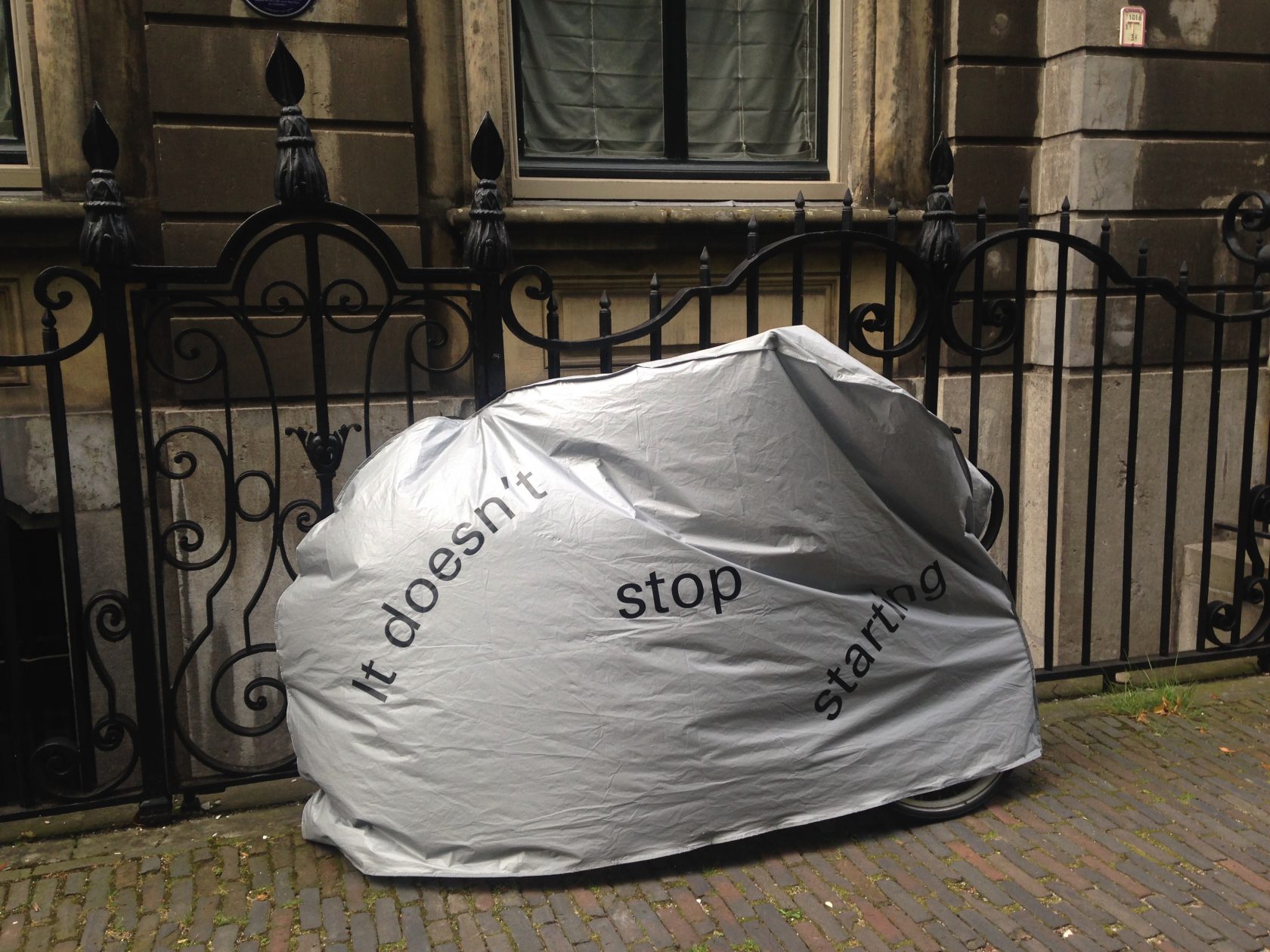
(2) Working site specific most of the time, in what kind of context do you really like to exhibit (your work)? And what kind of context are you dreaming of?
Working site-specific means that the spaces where I’m exhibiting can seem to be very random – it can be literally everywhere. This question suggests that I’m working towards an ideal situation, but this is not my goal – I like to be challenged. But to give some kind of answer: I would find it very interesting to exhibit in a place where I’d be able to influence everything; from promotion, to the package delivery, to the emergency plan. Not that I would, but I’d like that I could. To elaborate a bit more on my site-specific work: I would say that an object can’t function without the context: the context is as important as the work itself. Even a street obstruction that is happening before you enter a space is part of it, since I think it’s inevitable that it will interfere with the art that is shown. Of course it’s difficult (and unnecessary) to keep everything in mind, but it makes you aware of details and how all those small details can change the work you are looking at.
(3) Can you guide us to the ideal situation to work in?
Usually a good night sleep, enough budget and some odd architecture would help a lot to get started. Also a clear idea on who the audience might be can help. Enough time to prepare (but also not too much time – this can kill your tension arc) but sometimes I’m thinking it might also be nice to have time after the exhibition, some sort of evaluation moment with the audience where they can give their feedback. And curators that are involved, but not too involved – at least involved enough to be able to spar with them. In general it often happens that the situations that seem not so ideal turn out to be very fruitful, and vice versa.
Voetman: I think you can only experience your work in real life. It is very difficult to relate to it from a picture.
Slütter: The last work I made, for the Aanschouw in Rotterdam, was reaching this point. It exists as a photo of a ceiling, presented in the window pane [on the street]. It is a matte print with light stains on it. Above it, you can see adhesive stripes on the window that emphasize the reflection. You can mainly see the reflection when you see the documentation [online]. It is very important that the person who normally takes the photo, will actually take it: after all, he has the right length to place the stripes in the right place [of his camera]. But what you don’t see, if you only see the photo of the photo, is that the light reflection on the print is fake. You only see that on the spot itself, in front of the Aanschouw, when you move and see that the reflection doesn’t move along. Then you surely get these different layers of seeing.
Voetman: So we need both perspectives?
Slütter: Yes. I have only seen the digital work, because I wasn’t even present when installing it. It’s funny: that I belong to that ‘one’ group myself.
Voetman: Wondering about authorship, a term that I think is important in your practice, I would like to dive into the art initiative in which you are involved: Location Z. Are the dialogues with the place and others consciously changing your own practice? Do you think being an artist is (still) an individual matter? Of course, this tension already arises when speculating about the participants in your work.
Slütter: Good question. I would like to say that it is very fluid, that everyone participates and everything will participate, and that it works in such an initiative. But I don’t share my studio. That is a conscious choice, many people in the initiative do share their studio. I can’t do that: I go crazy when I see everything else around me, because I have to relate to it. I don’t have to, but this is one of the ‘frames’ I’m working with. It is a question that I have to think about longer: since the whole idea of being the artist alone is perhaps something that no longer exists. This said, the initiative offers me a lot of space: it is easier to get space as a group, and of course you have an exchange during dinners. in that respect you can say that artistry as a one-man – practice maybe never existed?

(4) Do you remember the first moment you experienced life the way you do as ‘an artist’?
I can’t recall a specific moment, since I find it hard to distinguish who I am from being who I am as an artist.
(5) Is there something you ‘hate’ [or: don’t like] being an artist, or in the art discourse itself?
I’m wondering if this is a question that derives from my work. To be honest, I’m happy that I’m an artist and of course it has it’s cons – but these are not very different from other jobs.
Voetman: This question is a bit rude, but I think it is relevant to ask, precisely because artistry is a large and broad concept. You already replied that you cannot distinguish your position as an artist from who you are, earlier.
Slütter: It’s difficult to think about the being of an ‘artist’. I have to think of the word ‘doctor’. When we place this concept in your question: will you continue your life as a doctor, or will you work as a doctor, or will you watch as a doctor?
Voetman: But there has been a point that you found the label ‘photographer’ too restrictive. Do you think being an artist is more broad?
Slütter: Yes, but maybe that’s an illusion. Ultimately, there is a system in which everything- and everyone tries to join. This also relates to the question ‘Is there something you hate about being an artist?’ There are also plenty of things that aren’t pleasant in ‘normal work’, though. The art discourse also takes part in these patterns.
(6) What’s the major role of text in your artistic practice?
It has a similar role as the other materials I use – it’s an element I often use in my work. Sometimes to emphasize things or take the focus away. Furthermore I do like word jokes.
(7) How would you describe your work in three independent words?
playfull
moments
boundaries
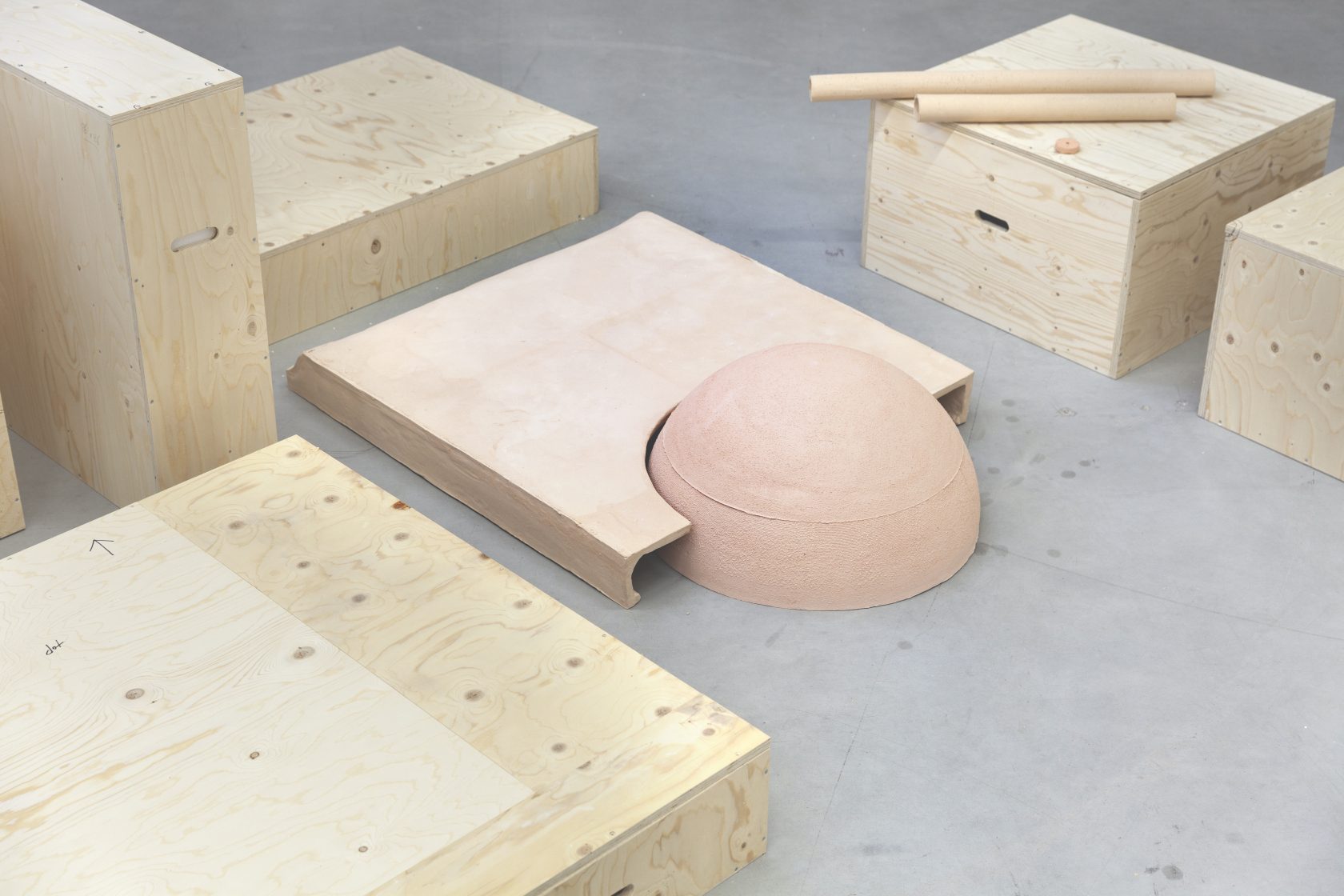
(8) Do you remember an important reaction of a spectator to your work that has stayed with you the most, lately? Why?
During an exhibition there was a woman who came to me and told me she counted every part of my work – a very high number. Then she went to point everything to see if it was correct what she had counted. It felt very strange to me to count it because it is not my intention to demarcate – the woman was trying to gain control but I was unable to satisfy her.
Voetman: She thought to get grip on it by counting?
Slütter: Yes, she thought that she had understood the work and came to me to verify. But: can you verify a work of art? I really liked the fact that she did count: it made my point clear, except she didn’t understand my point either. However, she pointed out that we always try to make a whole from individual parts, to get some grip on the situation. I never counted my work myself, and I agree that everything ís the work. What she did, in the end, is what I’m normally doing: to look at all elements in a context and see if there is anything to rhyme.
(9) In your artist statement you are mentioning the importance of patterns to accomplish clarity in life. Why are you interested in taking, feeling or having control?
It’s not only about me being in control or having the feeling of control. It’s more that I do find it interesting, that control can give you the feeling of having certain grip. And I do like to see when things come in a grey zone, where it feels like the spectator is in control, and then loses it and then finds it back again. This debate between the artist and the work and what the audience should get from it. I consider the work as a try-out and therefore I think it should have enough space for the unexpected.
(10) Do we need a certain degree of control to live our lives? Do we need artists to break open these structures at the same time?
As a person you put a lot of things in frames, to be in control, I think everyone needs that. I hope that artists try to show that some frames have their limitations, or to show people the possibility to broaden their own frame. But I don’t believe you can reach everyone, I don’t see that as a social task of the artist. It has to come from both sides.
(11) Working as an artist during Covid-19, (how) do you consider the major role of being an artist in society?
I don’t think my role as an artist has changed during Covid-19 – but I noticed that I’ve become more aware of the global situation I’m working in. How this affects my work (besides practical circumstances) or my role in society, I am not able to say yet.
(12) Can you tell us something about the project(s) you’re currently working on?
Covid-19 gave me the time to learn some artist-studio-skills that I felt I was lacking, such as working with stained glass. But I do miss the interaction with the audience – I was planning to make a performance based work for the Ferry Festival in Amsterdam but sadly that got postponed. Currently I’m working on a group exhibition in Arnhem called Raus, where Mestlab31 asked artists to take their work outside. This week I will meet the curators and visit the park where the exhibition will be. For the rest I will start my Masters in September at the Royal Academy of Fine Arts in Antwerp, at the department In Situ. So currently I’m making preparations to start, and looking forward to new input.
Voetman: You answered to move your work to a park for Raus, how does ‘to work’ start for you, if everything is part of the context?
Slütter: I do have works in mind that I would like to perform in the park. But often, it doesn’t match with the context itself. I will start to play. The park is outside. So, what is ‘outside’? Outside is: weather conditions that change. And it takes place as an short event, it will last a few days. I can start doing something with ‘time’ – this way, there is a lot of data about it being outside. By collecting data, I have many parts that I found interesting to work with. Every work is an investigation and has never been completed this way. It isn’t about whether something is or is not, but that you keep trying without a judgment, related to whether or not you succeed.
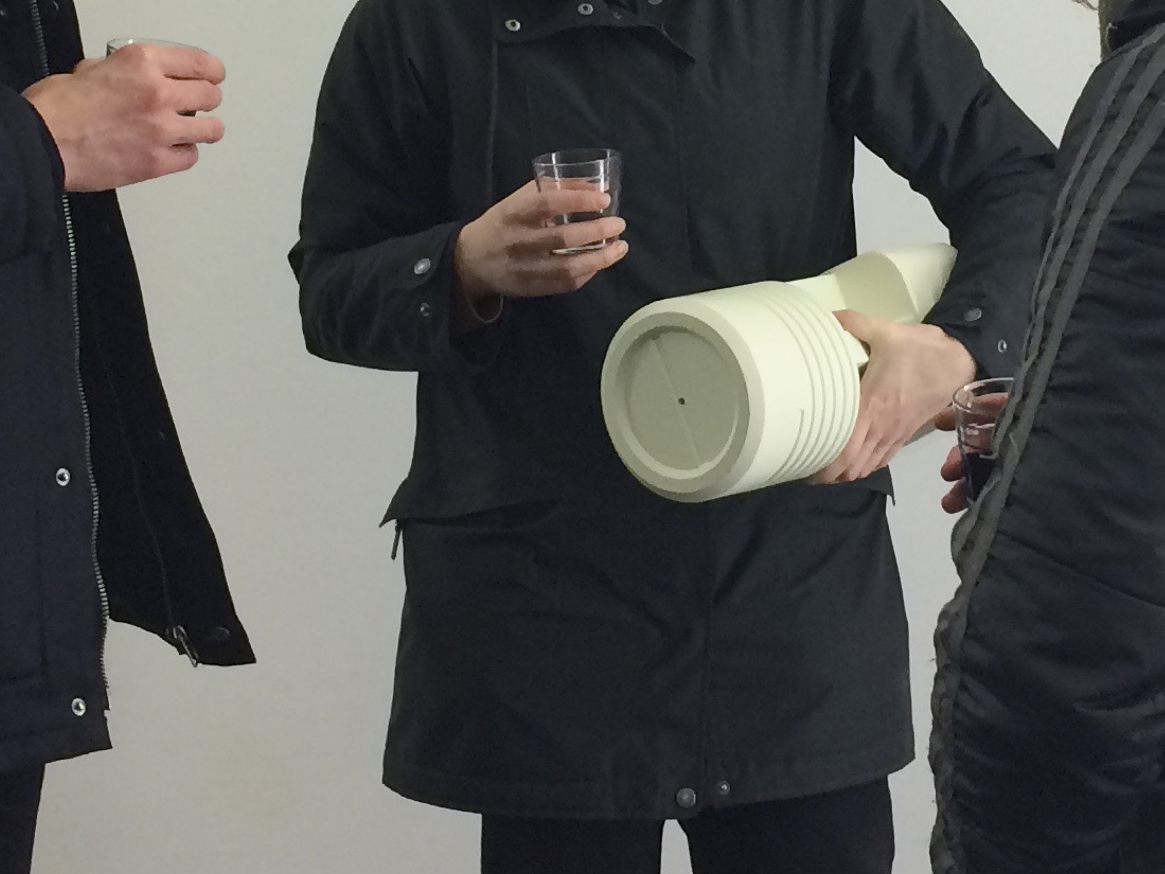
(13) How could the curators of the Invest Week help you, working out? What do you hope to find within this artist-curator dialogue?
During a previous Invest Week I really appreciated the talks with curators because we often had similar interests, such as the audience and the space. Due to the various nationalities among the curators I had interesting perspectives on my work, and I learned how certain ideas or interests seem typical for the Western world, but are in fact happening in a lot more places.
Voetman: What do you want to talk about with the curators of the Invest Week, since you’re occupying a curatorial position yourself too?
Slütter: I really enjoy speaking to curators since they have similar interests, such as making exhibitions. I find it interesting how a curator thinks about his or her own position: when are you a curator, and when do you become an artist? How do you separate this, and do you want to keep it separated? This process exists indirectly in my work: it is not very clear, but it touches it. […] I made a work at ekwc. It is a fun but difficult work. It is large and made of ceramic. The material itself has a lot of value and I no longer know how to handle the work, even though I have clear ideas about it. I would like to divide the work among all the works that I am going to make in the next ten years, so that the whole drifts apart and eventually comes together back again. The work will be spread as a pre-composed oeuvre: this way I will have control over what my oeuvre will look like. That is of course the question: haven’t you always had this kind of control? The work is large and flat, I want to make it more light weighted and playful. I would like to talk about that and I’m interested how they see the detachment of the work from the values is has now.
Voetman: Another long-term framework !
Slütter: I really like frameworks –
Voetman: Can you break through your own work frameworks?
Slütter: I’ll try to find ‘loopholes’ in my own rules. Such as: ‘I don’t make objects’. But, I do make objects, when they are flexible, and are able to lose its value, become one with the environment etc. But still I don’t really know if I really can break through my frames.
The Invest Week is an annual 4-day program for artists who were granted the PRO Invest subsidy. This subsidy supports young artists based in The Hague in the development of their artistic practice and is aimed to keep artists and graduates of the art academy in the city of The Hague. In order to give the artists an extra incentive, Stroom organizes this week that consists of a public evening of talks, a program of studio visits, presentations and a number of informal meetings. The intent is to broaden the visibility of artists from The Hague through future exhibitions, presentations and exchange programs. The Invest Week 2020 will take place from 21 to 25 of September.